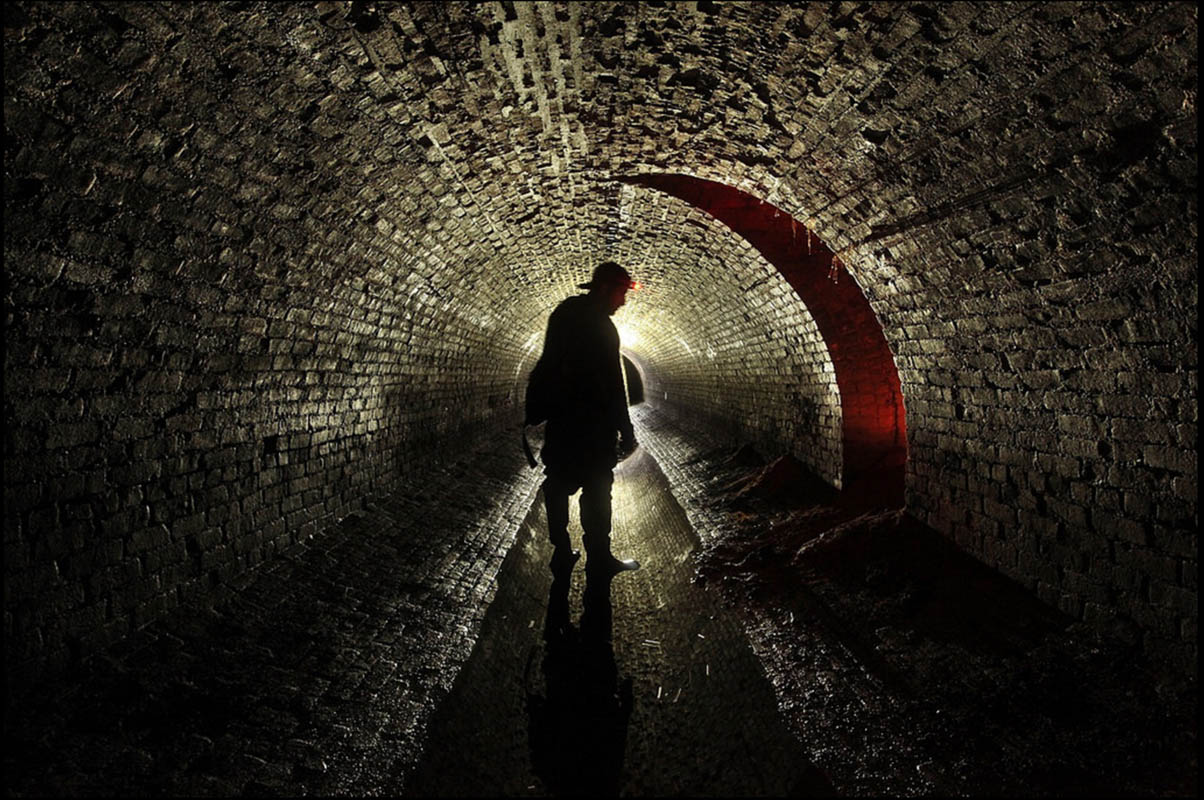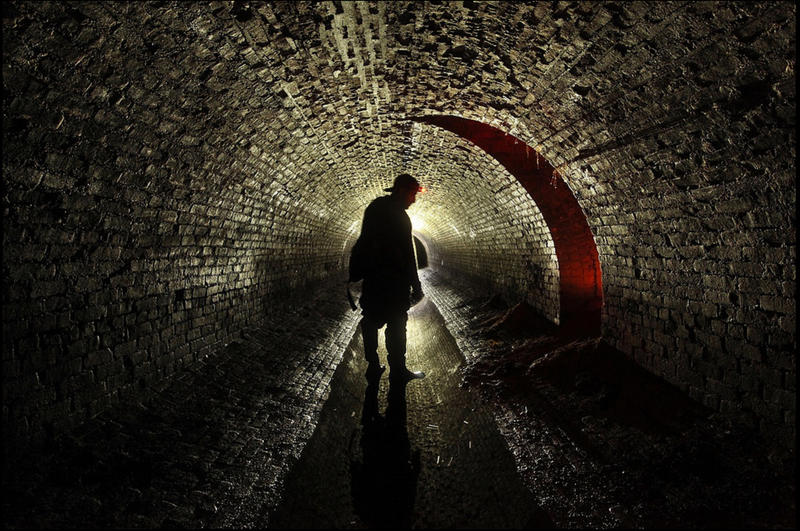 Inside the Brooklyn Aqueduct. 2016, photo by Brendan Clinch
Inside the Brooklyn Aqueduct. 2016, photo by Brendan Clinch
On December 7th, the New York State Historic Review Board voted unanimously to place the Ridgewood Reservoir — a decommissioned 19th century reservoir in Highland Park — on the New York State Register of Historic Places. The application has been submitted to the National Park Service, and approval is anticipated for April 2017.
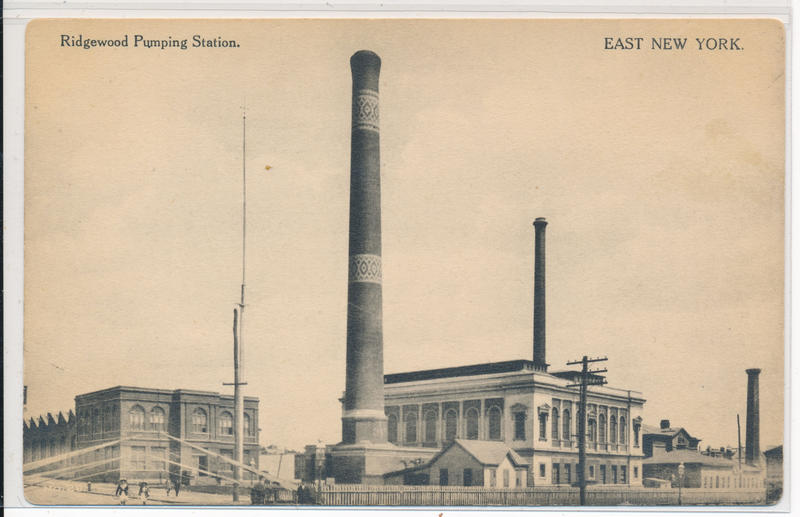 Ridgewood Pumping Station, circa 1910 (courtesy the Greater Astoria Historical Society)
Ridgewood Pumping Station, circa 1910 (courtesy the Greater Astoria Historical Society)
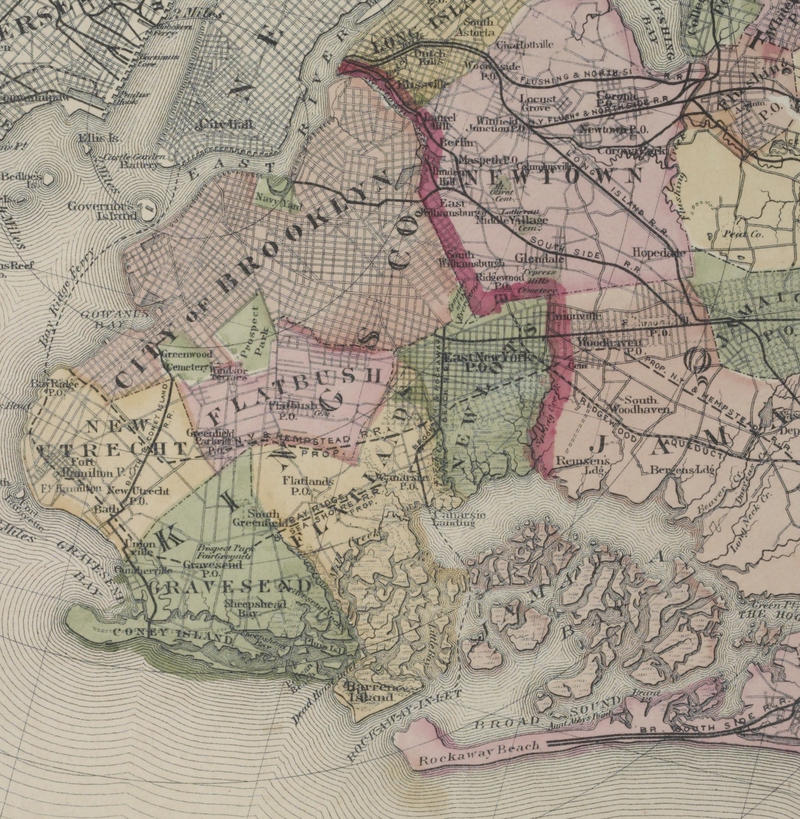 This 1873 map shows the extent of the growth of the City of Brooklyn after the construction of the Brooklyn Water Works. The Ridgewood Reservoir is located just to the north of New Lots. Atlas of Long Island NY. From Recent And Actual Surveys and Records, Frederick W. Beers, 1873 (Courtesy of New York Public Library).
This 1873 map shows the extent of the growth of the City of Brooklyn after the construction of the Brooklyn Water Works. The Ridgewood Reservoir is located just to the north of New Lots. Atlas of Long Island NY. From Recent And Actual Surveys and Records, Frederick W. Beers, 1873 (Courtesy of New York Public Library).
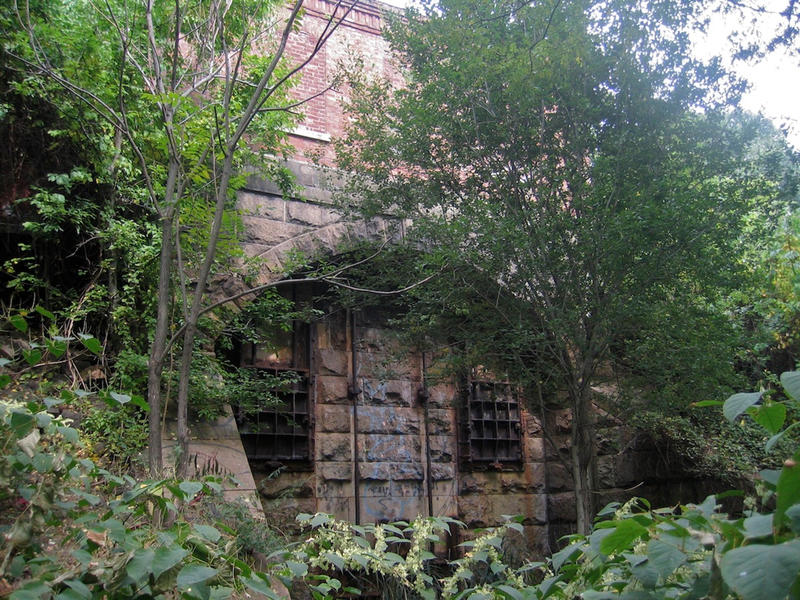 Gates on the lower level on the gatehouse of Basin 3. The stone facing of the reservoir wall is visible through the vegetation to the left of the gate. Courtesy of Rob Jett.
Gates on the lower level on the gatehouse of Basin 3. The stone facing of the reservoir wall is visible through the vegetation to the left of the gate. Courtesy of Rob Jett.
Sitting on the Brooklyn–Queens border, the historic Ridgewood Reservoir was built in 1859 to supply Brooklyn, then an independent city, with high quality water that came from six streams from Queens and Nassau counties. In 1898 — following Brooklyn’s merging into the Greater City of New York, and the introduction of new reservoirs in the Catskills — the Ridgewood Reservoir was officially decommissioned and drained. In the decades since, a lush forest has grown on the site, and a freshwater pond sits in the middle basin. It is now home to 100 species of birds and wildlife, according to a NYC H2O press release.
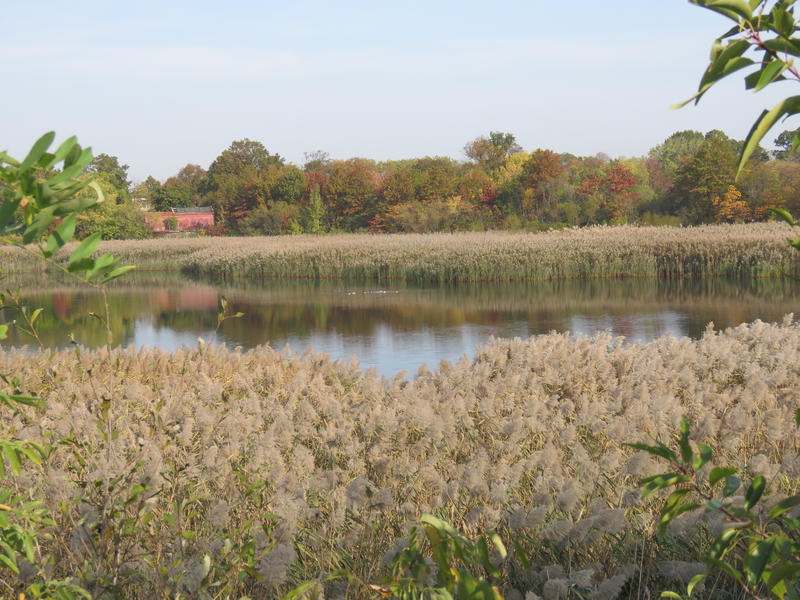 Basin 2 with gatehouse on left and phragmites choking the water. October 2016. Courtesy of NYC H2O.
Basin 2 with gatehouse on left and phragmites choking the water. October 2016. Courtesy of NYC H2O.
NYC H2O, a nonprofit that educates people about New York’s water system, wrote the Historic Register Application for the Reservoir. As part of its mission, it has brought 3,000 Brooklyn and Queens students on Water Ecology and Engineering Field Trips to the Ridgewood Reservoir since 2014.
“The Ridgewood Reservoir is a majestic place that deserves to be listed on the National Historic Register as a cultural and ecological treasure to be discovered by generations to come,” NYC H2O’s Executive Director Matt Malina testified at the hearing. “In the course of bringing a new generation of New Yorkers to visit and experience the site, we realized that that we had become stakeholders in advocating for its preservation. The support of elected officials, community leaders and organizations has been critical to preventing its demolition and in advocating for its future.”
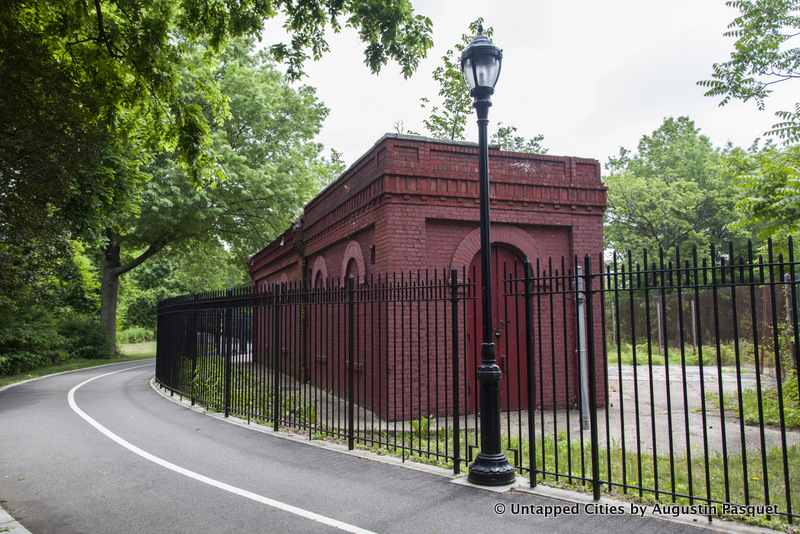 Gatehouse for Basins 1 and 2. 2014.
Gatehouse for Basins 1 and 2. 2014.
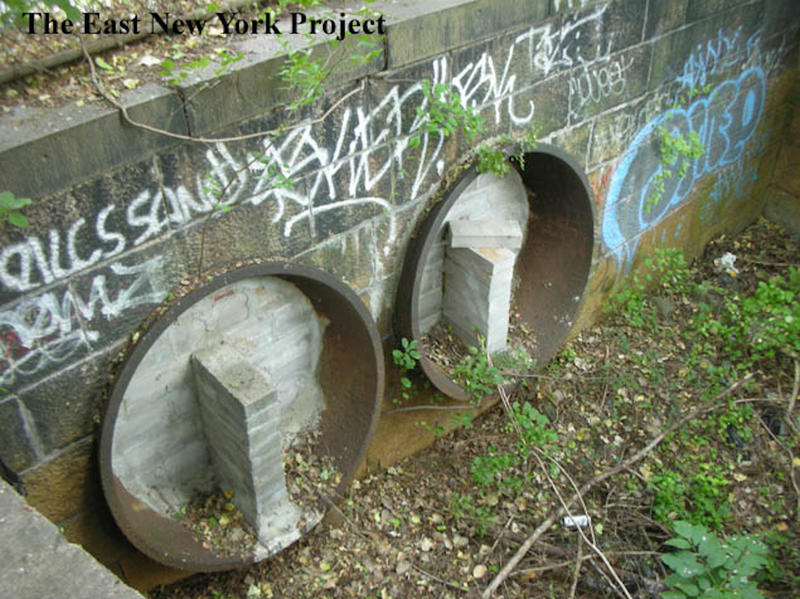 Iron pipes (bricked closed), at influx chamber of Basin 3, that brought the water into the reservoir from the pumping station below. Courtesy of The East New York Project.
Iron pipes (bricked closed), at influx chamber of Basin 3, that brought the water into the reservoir from the pumping station below. Courtesy of The East New York Project.
“The New York State Historic Review Board’s unanimous decision to place the Ridgewood Reservoir on the New York State Register of Historic Places is a major victory for the reservoir, the surrounding community and individuals who come to enjoy what nature has created there, ” stated State Senator Joseph P. Addabbo, Jr., a member of the New York State Senate Committee on Environmental Conservation. “Now, the reservoir will be preserved for generations to come.”
Next, read the Empire State Dairy in East New York Designated a NYC Landmark and NYC’s IRT Powerhouse on West 59th Street Gets Landmark Status.






